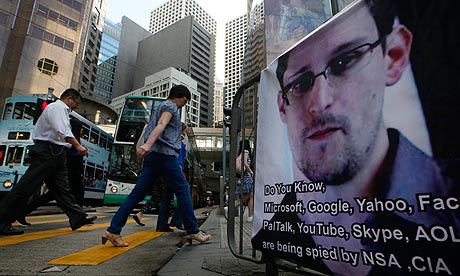Published onWednesday, August 13, 2014 by Common Dreams
by Lauren McCauley, staff writer
In an in-depth interview published by Wired Magazine on Wednesday, Edward Snowden discloses what government activities proved to be the “last straw,” prompting the whistleblower to expose the depths of the National Security Agency’s secret surveillance operation.
Speaking with investigative journalist James Bamford—who blew the whistle on a government eavesdropping program when stationed in Hawaii during the Vietnam War and later wrote a number of best-selling books about government secrecy and the NSA—Snowden reveals how a botched U.S. government hacking operation caused Syria’s 2012 internet blackout.
Bamford writes:
One day an intelligence officer told him that TAO—a division of NSA hackers—had attempted in 2012 to remotely install an exploit in one of the core routers at a major Internet service provider in Syria, which was in the midst of a prolonged civil war. This would have given the NSA access to email and other Internet traffic from much of the country. But something went wrong, and the router was bricked instead—rendered totally inoperable. The failure of this router caused Syria to suddenly lose all connection to the Internet—although the public didn’t know that the US government was responsible.
Snowden also revealed that, after the operatives realized what they had done, one jokingly said: “If we get caught, we can always point the finger at Israel.”
During his clandestine meeting with Bamford, Snowden disclosed for the first time the existence of another “Strangelovian cyberwarfare program,” codenamed MonsterMind, which he described as the ultimate threat to privacy.
Like other programs before it, MonsterMind automated the process of searching for the beginnings of a foreign cyberattack. Unique to the program, however, was that once a suspected attack was detected, MonsterMind would fire back with no human involvement. Snowden explained to Bamford that this is problematic because attacks are often routed through a third-party country. “You could have someone sitting in China, for example, making it appear that one of these attacks is originating in Russia. And then we end up shooting back at a Russian hospital. What happens next?”
Further, for the system to work, the NSA must access virtually all “traffic flows,” or communications, coming in from overseas to people in the United States.
“And if we’re analyzing all traffic flows, that means we have to be intercepting all traffic flows,” said Snowden. “That means violating the Fourth Amendment, seizing private communications without a warrant, without probable cause or even a suspicion of wrongdoing. For everyone, all the time.”
Snowden spoke at length with Bamford about his motivations for blowing the whistle on the NSA, but said it was learning about these two particular government operations—along with the existence of the NSA’s massive data repository center located in Utah—that finally pushed him over the edge.
“Given the NSA’s new data storage mausoleum in Bluffdale, its potential to start an accidental war, and the charge to conduct surveillance on all incoming communications, Snowden believed he had no choice but to take his thumb drives and tell the world what he knew,” Bamford writes, adding that more NSA revelations will be forthcoming.


